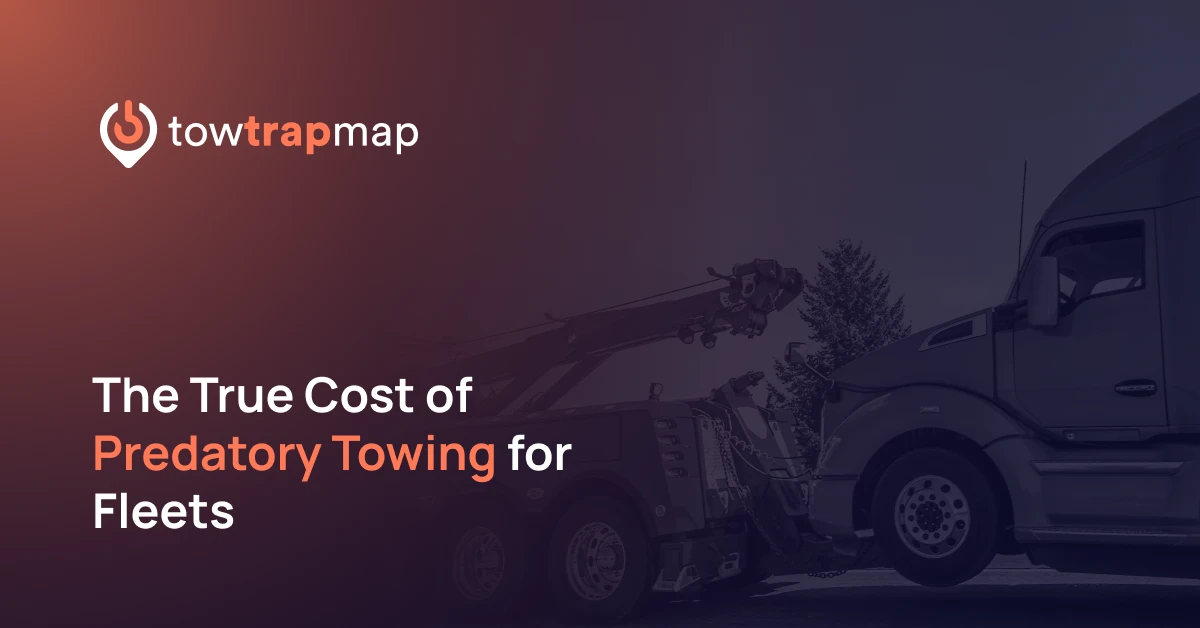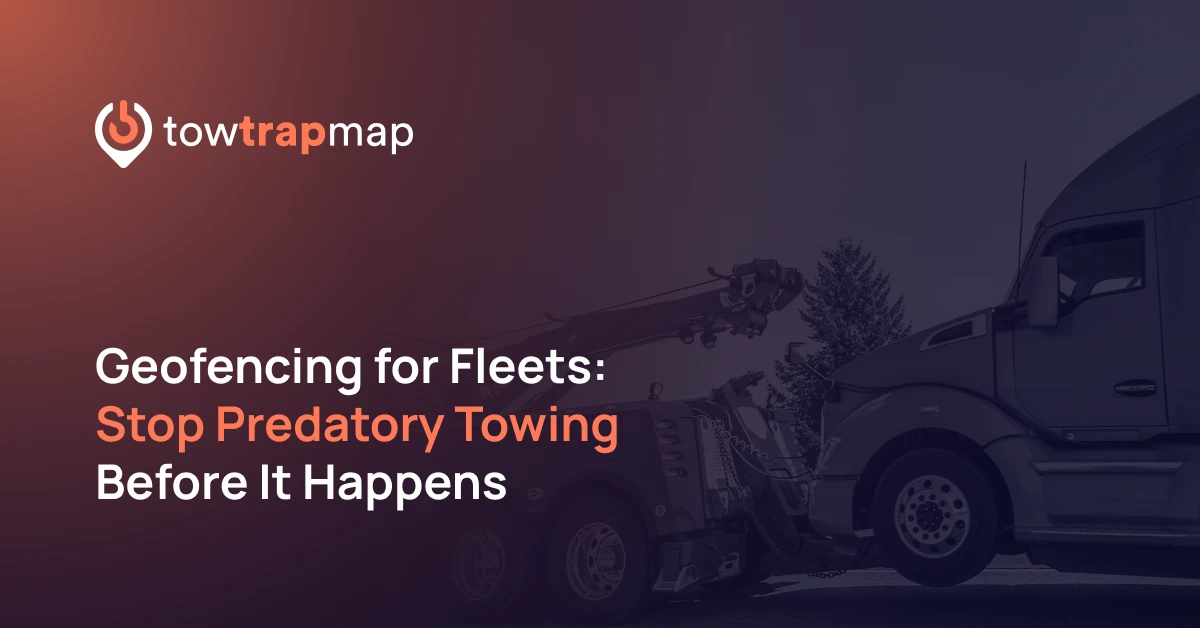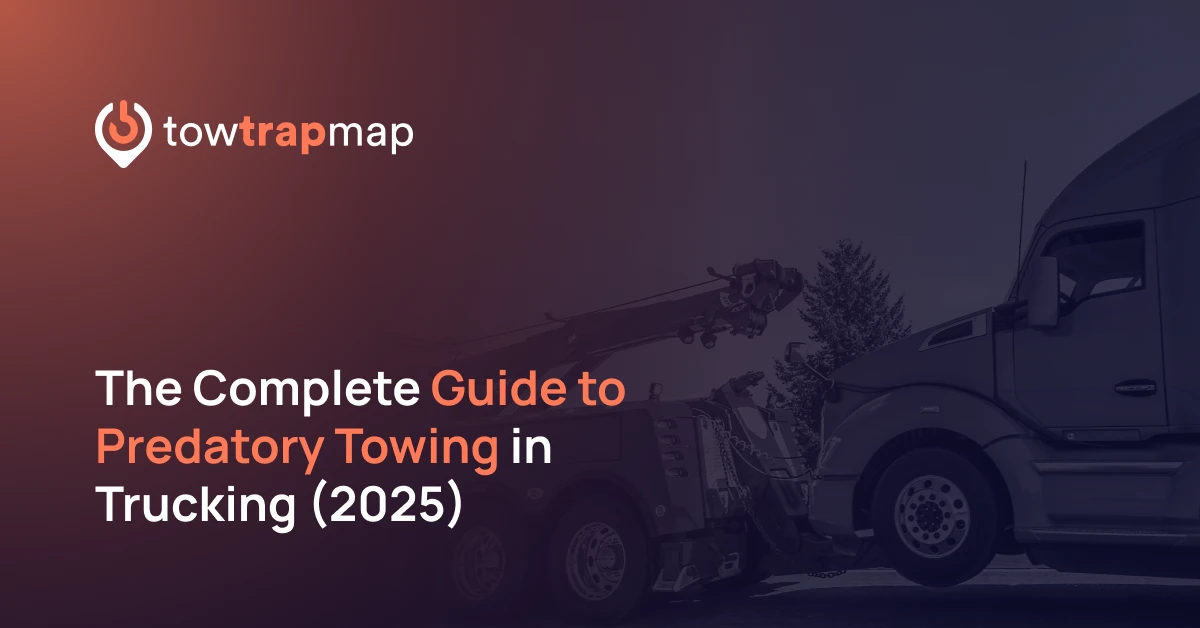Predatory towing is more than just a nuisance — for trucking fleets, it’s a financial threat hiding in plain sight.
Unlike a flat tire or a breakdown, these costs aren’t predictable or manageable. They strike suddenly, and the damage can be devastating.
In one recent case, a mid-sized carrier was hit with two predatory tows in the same month — one for $6,000 and another for $9,000. That’s $15,000 in unplanned expenses in just 30 days. And that number doesn’t even begin to capture the ripple effect of downtime, missed loads, and lost customer trust.
This article breaks down the true cost of predatory towing for fleets — both the direct charges and the hidden expenses — and how fleets can start to protect themselves.
The Direct Costs — When the Bill Hits Hard
The most visible part of predatory towing is the invoice. These aren’t ordinary towing charges; they’re engineered to exploit trucks:
Towing & Hook-Up Fee: Heavy-duty tows often start at $1,500–$3,000.
Storage Fees: Trucks can rack up $200–$300 per day just sitting in the yard.
Administrative & Release Fees: “Gate fees,” “paperwork processing,” or “administrative charges” can tack on hundreds more.
Mileage Charges: Inflated per-mile charges, even when the tow yard is nearby.
That’s how a single tow ends up at $6,000–$9,000 instead of a more reasonable rate.
For the fleet mentioned earlier, those two events cost $15,000 in a single month. That’s equivalent to covering fuel, insurance, and maintenance for multiple trucks for an entire month — erased by just two tows.
The Indirect Costs — The Hidden Damage
The bill is just the beginning. What makes predatory towing so destructive are the hidden costs that ripple across fleet operations.
Lost Loads & Customer Penalties
When a truck gets towed, freight doesn’t move. Customers are left waiting, and in time-sensitive industries, a late load can trigger penalties or even cancel a contract.
For a refrigerated or high-value shipment, a single missed deadline can mean tens of thousands in customer losses — damage that rarely makes it onto the tow bill but hits the fleet’s bottom line.
Driver Downtime & Morale
Every hour a truck sits in a tow yard is an hour of driver downtime. Fleets may still be responsible for driver pay, hotels, or layover costs.
Worse, drivers see predatory towing as unfair and demoralizing. In an industry already battling high turnover, one bad experience can push a driver to leave — and replacing a driver costs $5,000–$10,000 on average.
Dispatch & Administrative Disruption
A tow doesn’t just affect the driver; it throws the entire operation off balance. Dispatchers have to scramble:
Find alternate trucks to cover the load.
Negotiate with tow yards.
Reassure angry customers.
This administrative drain pulls staff away from revenue-generating activities, adding hidden labor costs that compound the tow fee.
Insurance & Risk Profile
Some fleets may try to recover losses through insurance claims. But multiple towing-related claims can raise red flags for insurers, leading to higher premiums. In a market where insurance is already one of the top three fleet expenses, this added risk can’t be ignored.
Why Fleets Can’t Afford to Ignore It
A fleet might see a $6,000 tow and assume it’s a rare, one-off event. But predatory towing often targets the same locations again and again.
For fleets that run consistent routes through high-risk areas, these incidents pile up fast:
Two events = $15,000.
A fleet of 50–100 trucks could easily see $50,000–$100,000 in annual losses.
On thin trucking margins, that’s the difference between a profitable year and a loss.
The danger isn’t just the direct charge — it’s the fact that fleets can’t predict or budget for it.
How Fleets Can Protect Themselves
Until now, most fleets only had two options:
Train drivers to spot suspicious lots (but signs are often hidden).
Pay the invoice and move on — hoping not to get trapped again.
That approach isn’t sustainable.
This is why we built TowTrapMap — a community-driven tool to fight back against predatory towing.
Here’s how it works:
Drivers and fleets submit tow trap reports — locations where trucks were unfairly towed.
Reports are moderated and added to a map of high-risk zones.
Fleets will soon be able to export geofence zones (GeoJSON/CSV) into Samsara, Geotab, or Motive.
When a truck approaches a reported tow trap, alerts can prevent drivers from entering risky lots.
This approach doesn’t just save money — it builds a protective network where every report reduces risk for the next fleet.
The Bottom Line
Predatory towing is not an occasional nuisance — it’s a systemic financial risk for fleets.
Direct fees can hit $5,000–$10,000 per incident.
Indirect costs — downtime, lost loads, turnover, and admin disruption — often double or triple the loss.
A single month with multiple incidents can erase tens of thousands of dollars from the books.
For the mid-sized fleet hit with two predatory tows in one month, the $15,000 invoice was only part of the story. The ripple effect cost even more.
Call to Action
The trucking industry doesn’t have to accept predatory towing as “just part of the job.”
Every fleet that contributes to TowTrapMap helps protect the entire community.
👉 If you’ve experienced predatory towing, share it today → TowTrapMap.com/report.
Because every report protects the next driver. 🚛



